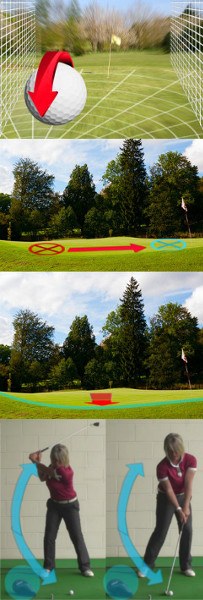
There is a strategic element to everything you do on the golf course. Whether you are even thinking about it or not, you make a long string of decisions throughout a round of golf, from the first hole on to the last. For instance, on your first shot of the day, you’ll need to pick a target line, a club, and possibly make some adjustments for course conditions. And that’s just on the first shot. The decisions just keep coming in golf, and it can be a lot to handle if you don’t have a plan in place.
When trying to hit wedge shots close to the hole, you need to think strategically in order to give yourself the best possible chance at success. Many players overlook the importance of strategy in this part of the game since these shots seem rather easy. What could go wrong when you have a wedge in your hand? Well, plenty could go wrong, and it probably will unless you make a smart plan for how to deal with the shot.
Let’s take a look at some of the key techniques and strategy components to keep in mind when getting ready to play a wedge shot.
- Favor the low side. This is almost always good advice, and it is a simple tip to follow. As you pick out your target line, favor the low side of the hole slightly in order to improve your odds of having an uphill putt. You can be more aggressive when putting uphill, so it is more likely that you’ll knock your putt in after hitting a solid wedge. Even if you were to hit a wedge in to just three or four feet from the cup, you might have to be careful with that putt if the ball is on the high side. In fact, it is sometimes better to be a little farther away on the low side than closer but above the hole. Do your best to determine which side is the low side while standing back in the fairway and then favor that side with the shot.
- Don’t take on too much risk. You might be surprised to see this point on a list of wedge game strategies. After all, most golfers think about being aggressive when they get to use a wedge, since they are so close to the green. And there is nothing wrong with being aggressive, but you need to be smart as well. Making a big mistake with a wedge can cost you in a big way on the scorecard. For example, picture a wedge shot where you are hitting the ball toward a hole that is cut just a couple steps over a deep bunker. You want to get the ball close, but you also need to avoid that bunker. If you plan to land the ball barely over the bunker and miss your spot just a bit short, the ball is in the sand and you are in trouble on that particular hole. Unless you absolutely have to make a birdie based on the status of your round – such as at the end of a match where you are behind – the better strategy is to play a bit long of the hole in order to stay away from that bunker. You still may wind up making a birdie, but if not, you will be far more likely to come away with your par. Sometimes, the best shots you play during a round of golf are the mistakes you don’t make.
- Look for a full swing. Whenever possible, it is desirable to make a full swing rather than having to modify your swing in order to adjust the distance that the ball will fly. Of course, it won’t always be possible to use a full swing, but keep this goal in mind and use it to ‘break a tie’. For instance, if you are trying to decide which club to hit, favor the one that lets you make a comfortable swing.
As you continue to rack up experience on the golf course, you will likely develop your own wedge game strategy that will serve you well. You’ll come to develop more trust in one of your wedges than the others, most likely, so you will decide to play more aggressively with that club when it comes into play. Pay attention to your own performance and tailor your decision making to give yourself the best possible chance to be successful.





